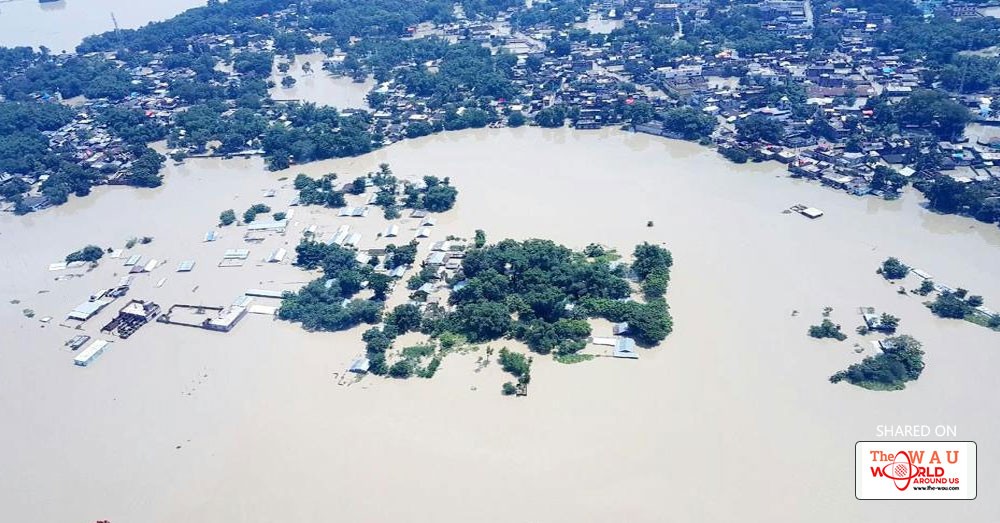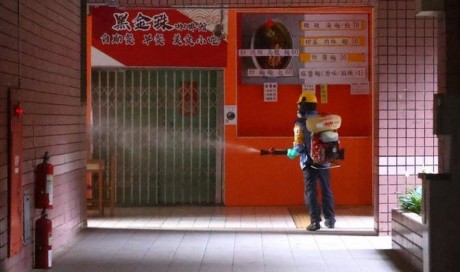Charoin aur nadi, beech main Marjadi [rivers on all four sides and Marjadi in the middle]–that is how a local saying describes Marjadi village. Situated in Gaunaha block in north Bihar’s Pashchim Champaran district, the village has Harbora river to its east and Ganguli river to its west; Kathaha cuts right across through it.
There are over 350 families living in Marjadi and they are quite used to the rise and fall in the waters of these pahadi [hill] rivers that come from Nepal.
However, the ferocity of the floods that nearly drowned the village in the intervening night of August 12 and August 13 this year left even disaster-prone Marjadi stunned.
At around 6pm on August 12, it started to rain heavily and the downpour continued till the next morning. “By 11 pm, there was chest-high water gushing fast through the village,” said Narendra Ram, a Marjadi resident. “People panicked and ran to the roofs of pucca houses and spent the night there.”
The water level in the village had crossed six feet.
“All our stored grains, cattle, clothes, everything had been washed away,” said Chanda Devi, who had to be rescued by her fellow villagers as the waters rose outside her home.
“I am over 80-years-old and have seen many floods, but the night of August 12 was nothing but pralay [apocalyptic deluge]. Had the downstream Triveni canal not breached, our entire village would have washed away,” said Jagan Ram, an old resident. “Pran ke ilawa gaon main kuch nahi bacha hai [Only human beings are left in the village].”
Last month, Bihar faced massive floods, as all the major rivers of north Bihar – including the Gandak, Burhi Gandak, Bagmati, and Kosi — rose due to heavy rainfall in the Terai region. The floods affected 17.1 million people in 19 districts of north Bihar, killing 514.
More than 73% of Bihar’s 94,163 sq km area is flood-prone. The problem is particularly acute in north Bihar, where almost 76% of the population–about 50 million people–lives under the constant threat of floods. Of these, those who live along the India-Nepal border deal with an additional danger — unpredictable flash floods originating from the rivers that flow down from the Himalayas across the border.
These flash floods that routinely affect the districts of Pashchim and Poorvi Champaran, Madhubani, Sitamarhi, Araria and Kishanganj are ancient affairs. But, local villagers and the state government officials claim that these floods are becoming more frequent because of climate change.
“Bihar is facing the impact of climate change, rainfall patterns here are getting disturbed. Rains come in bouts followed by long dry spells. We not only face more floods, but also have rising incidence of droughts in the state,” said Vyas Ji, vice-chairperson of Bihar State Disaster Management Authority (BSDMA).
Flash floods in Bihar escape national attention because the focus of flood control and management is limited to big rivers such as Kosi, Gandak, Bagmati, and so on. But they need immediate attention because those affected by these flash floods are among India’s poorest.
The per capita income (2011-12) in north Bihar’s six flash-flood affected districts is less than Rs 10,000, as per the ‘Economic Survey 2015-16’ of the government of Bihar. In contrast, the per capita income of Patna district is Rs 63,063.
The infant mortality rate (number of deaths of children under one year age per 1,000 live births) of these six districts ranges between 48 and 60, as per the Annual Health Survey 2012-13; Factsheet Bihar. The under-five mortality rate (probability of children dying between birth and five years age per 1,000 live births) in Sitamarhi is as high as 97 followed by 84 in Kishanganj, 76 in Araia and 72 in Pashchim Champaran. India’s average under five mortality rate is 50 per 1,000 li, ve births.
These frequent disasters trap people in a seemingly endless cycle of floods, poverty, indebtedness, low living standards and more floods, IndiaSpend investigations showed.
Why flash floods need a different plan of action
Flash floods and their aftermath need to be dealt with differently from riverine floods. Their character, behaviour, impact, occurrence and frequency are distinct from the big, riverine floods for which the government has an established protocol for rescue, relief and compensation.
For one, flash floods are not driven only by the monsoon; a heavy and steady downpour can unleash a torrent from the mountain rivers. Five Terai villages in Bihar visited by this reporter endure between 15 to 60 flash floods every year.
The waters tear in at high velocity with little warning, causing widespread destruction, wrecking houses, sweeping away cattle, damaging both standing and stored crops, eroding the soil and destroying farm bunds.
The waters recede fairly quickly–within four to eight hours –unlike riverine deluges, but the destruction is as much.
Since they occur frequently, the damage caused needs to be assessed quickly and compensation packages disbursed fast, so people can resume their lives.
However, IndiaSpend’s extensive conversations with villagers across the Terai showed that this is rarely the case.
...[ Continue to next page ]
Share This Post












